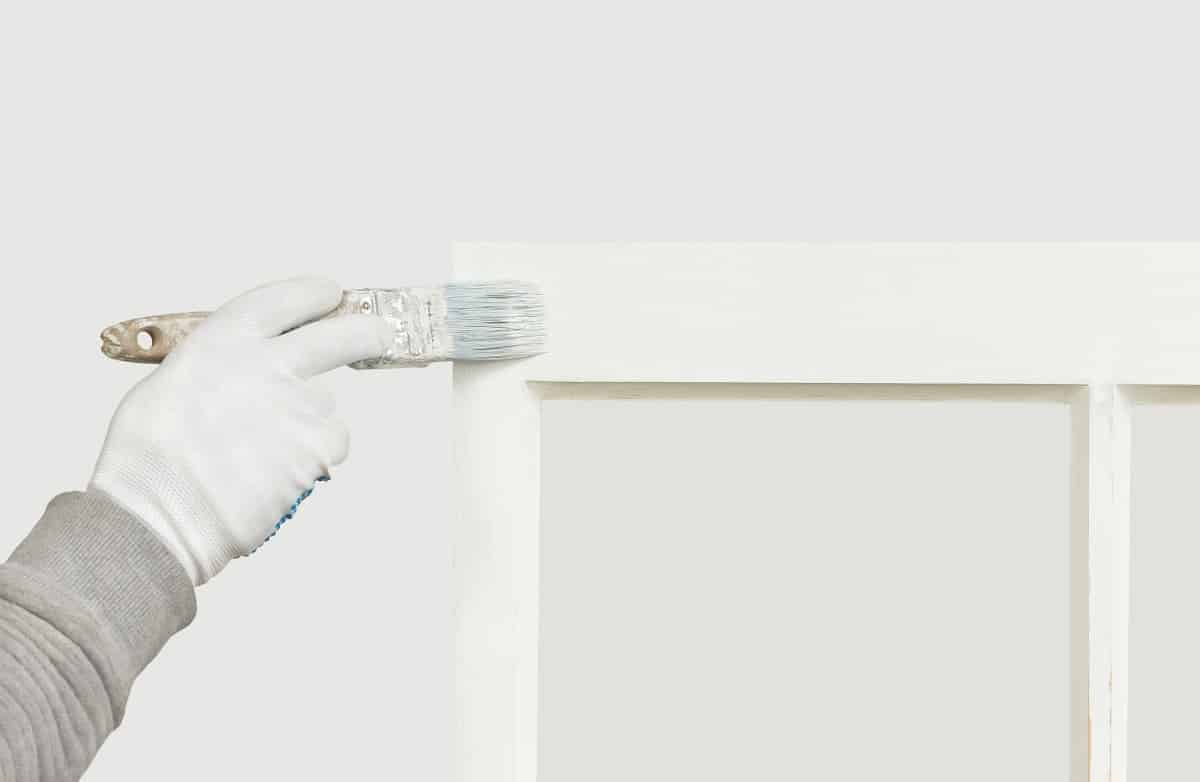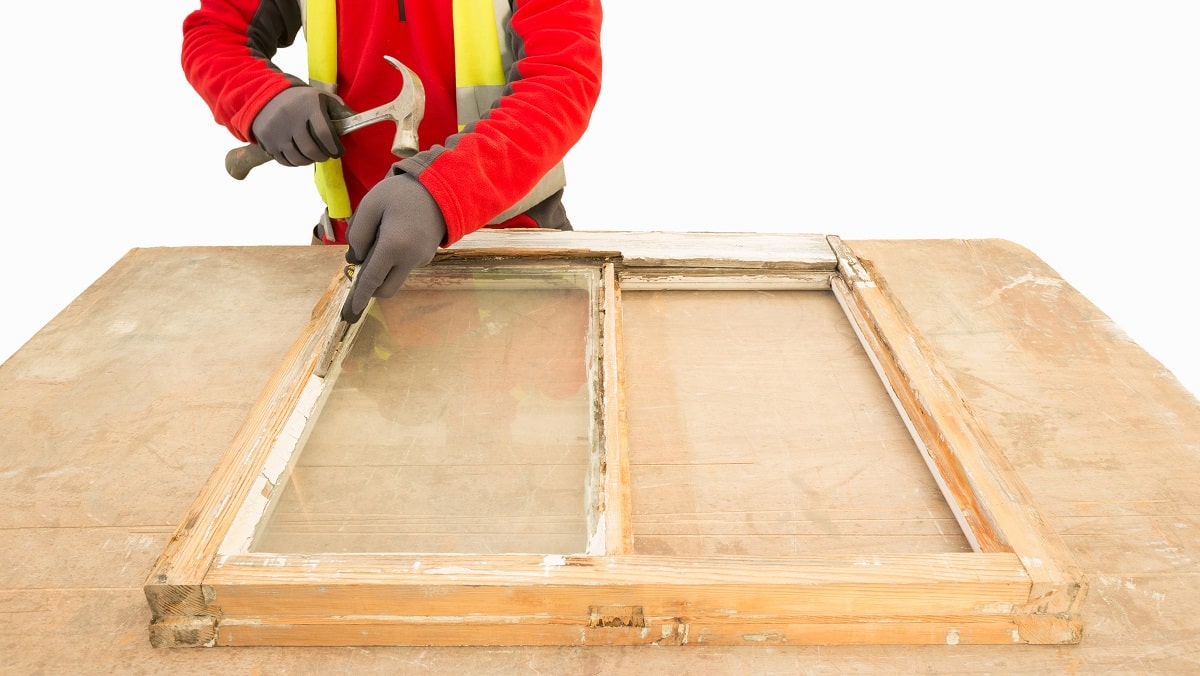The right paint can make all the difference for an interior window, and sash windows painting are particularly tricky. Getting it right is vital to avoid annoying paint marks on the window panes and hinges. It requires careful preparation and a high quality paint brand that can go on smoothly, creating a finish that you are proud to show off.
It’s important to know how to paint sash windows without it sticking. Sash windows are unique to older homes and buildings and provide an elegant look for any room. But sash windows can become damaged over time from movement, weather damage and general wear and tear, requiring anything from minor to major repairs and painting..
What Are Sash Windows?
Sash windows are designed with a rather elegant appeal. They are large patterned windows that have two moveable parts called the sashes which slide up and down in vertical grooves in a framed opening called a the window sill, which is part of the frame of the house.
The movable sashes or panes can be opened to let air into your home but if you keep them closed and sealed they will keep out cold weather and bugs. Therefore, you need to learn how to paint sash windows so they are beautiful to look at, without being covered in dust and dirt.
How Can I Paint Sash Windows?
One of the most important things about sash windows is that they should be kept in good condition and this is one thing that people should understand. The sash window maintenance involves cleaning of equipment like the glass and the window sill, as well as scraping away any debris that has managed to find its way in between the openings.
In order to get into it thoroughly, you must use some tools and a scraper to remove paint coatings. This is an essential thing to do if you want your sash windows to look sparkling. It is also crucial to check that all the joints are tight and have not been left alone for long periods of time without proper painting or treatments.
To get the best results when painting sash windows, follow these steps.
Choose the Right Paint
Picking your paint and filling any cracks is often the most difficult part of this job. This small step can save you from a lot of headaches later. If you are going to be applying paint to metal sash windows, then you need to choose a good exterior weatherproof sealer that has been designed to work with metal.
As with all painting projects, it’s important to closely match the sheen and colour of your new paint with what was originally used on your windows. If you have original paint remaining in good condition, then try to match this as closely as possible for maximum effect.
There are many different kinds of paint, but they can be separated into two broad types by their ingredients: solvent based or water based. Solvent-based paints dry much slower than water-based paints, and also are more prone to cracking from wood shrinkage as it dries.
Remove the hardware from the frame of the window
Use a screwdriver to carefully remove the screws from the window stop or the woodwork where it’s fixed. If the window is stuck, gently tap on each side with a hammer to loosen it. Clean the paint off the sash as much as possible. Don’t forget that metal bits can be left behind when cutting back paint, even after sanding.
When removing paint around the regulator and latch areas, use extra care so you don’t damage them in any way. Remove any filler or putty residue from inside the frame of the window using a wire brush or cloth dipped in turpentine.
Reverse the Sashes
The sashes are the glazed boxes between the top rail and bottom rail of a sash window. To reverse the sashes is to re-glaze them. This requires no structural work in an old window, just careful removal of original sash pins and replacement with new pins along with substitute glass and filling all but one or two of the old wooden times with air gaps with filler.
Paint may be allowed to dry on the outer faces so it forms a coat over the glass that functions as a primer for paint applied around the edge of the glass and on parts that project outwards from the wooden frame.
Sand down the wood
It is important to sand the wood properly so that it does not affect the existing paintwork. As most sash windows are made out of wood it is important that it is sanded down first to give the finish a smooth finish. This is very important because you want people looking at your window to see a well painted piece of furniture.
Make sure the wood is clean and remove old layers of paint. Fill in any cracks, using wood filler (e.g. Artex) then sand down again. Treat the wood to a coat of wax or varnish for protection. Paint it!
Paint the glazing bars
Paint the glazing bars, by hand or with a brush. In the latter case, you should use a small paintbrush, because using a thick-gauge one will damage the delicate woodwork. In order to create a new and neat appearance of the sash window filler, it is recommended that after painting it, you wipe it with a damp cloth or sponge. Then leave to dry.
If you decide to paint the glazing bars by hand – don’t forget about some protection. The most ideal option for this is plastic gloves or grainy work gloves. Terribly unpleasant will be if later on, your skin gets irritated or injured after touching the freshly painted windows frames, especially if you have sensitive or allergic skin.
Paint the frames
Before you start to paint sash windows, prepare the frames. Make sure the frames are dry and free of any dirt. It is also important to make sure your windows are clean.
Sash windows are made up of a frame and glass panes. Knowing how to paint them will ensure that your sashes stay in good condition. Put on your protective clothing, put newspaper down on the floor and cover all furniture with dust sheets. Give yourself lots of time to make sure you have done everything properly.
Paint the rest of the window
You can usually choose different colours for the interior and exterior of a sash window, but it’s best to match the colours carefully. If one sash is dark and another is light, match them up as much as possible, otherwise it will look odd from the outside and even odder from the inside!
There are two main ways of painting sash windows: either paint them on site or prep them off-site and paint them.
Remove paint splatters (if any)
If your sash windows have become spattered with paint, it’s best to remove any splatters before you start painting. A handheld brush and a vacuum cleaner are all you need unless the coating is particularly thick.
Final Thoughts
Anyone who has ever painted a sash window knows it’s easier said than done. They provide great access to the interior of your home and, when you step back from them, you can see they really have a classic look. If you want to keep your sash windows for decades to come, it’s important to look after them so that you can enjoy their benefits.





